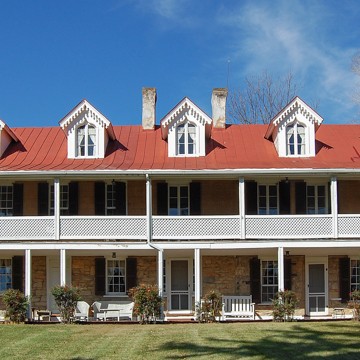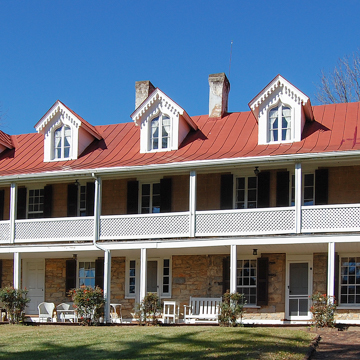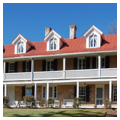You are here
Beggs-Weaver House (Union Forge, Buffalo Forge)
Since the early nineteenth century, this has been an important iron forge site. Thomas Beggs built a two-room house and a forge here. William Weaver and Thomas Mayberry purchased it and expanded the forging operation (Weaver subsequently dissolved his partnership with Mayberry). By the mid-nineteenth century the complex included mills, blacksmith shops, a post office, and rows of dwellings for Weaver's enslaved workforce. Very little is left. The main house is sited on the side of a hill with a high stone foundation serving as the ground floor. The two rooms to the southwest of the house are a later addition, and the Gothic Revival-trimmed dormers were added in the 1850s. In the late nineteenth century, a frame section was added to the rear of the house and a brick kitchen was built on the southwest. Notable outbuildings include two brick slave houses at the rear of the house, a stone kitchen to the south, and the ruins of a mill and store to the west. The iron forge operation has been the subject of a PBS documentary and a book, Bonds of Iron (1993), by Charles Dew.
Writing Credits
If SAH Archipedia has been useful to you, please consider supporting it.
SAH Archipedia tells the story of the United States through its buildings, landscapes, and cities. This freely available resource empowers the public with authoritative knowledge that deepens their understanding and appreciation of the built environment. But the Society of Architectural Historians, which created SAH Archipedia with University of Virginia Press, needs your support to maintain the high-caliber research, writing, photography, cartography, editing, design, and programming that make SAH Archipedia a trusted online resource available to all who value the history of place, heritage tourism, and learning.


















